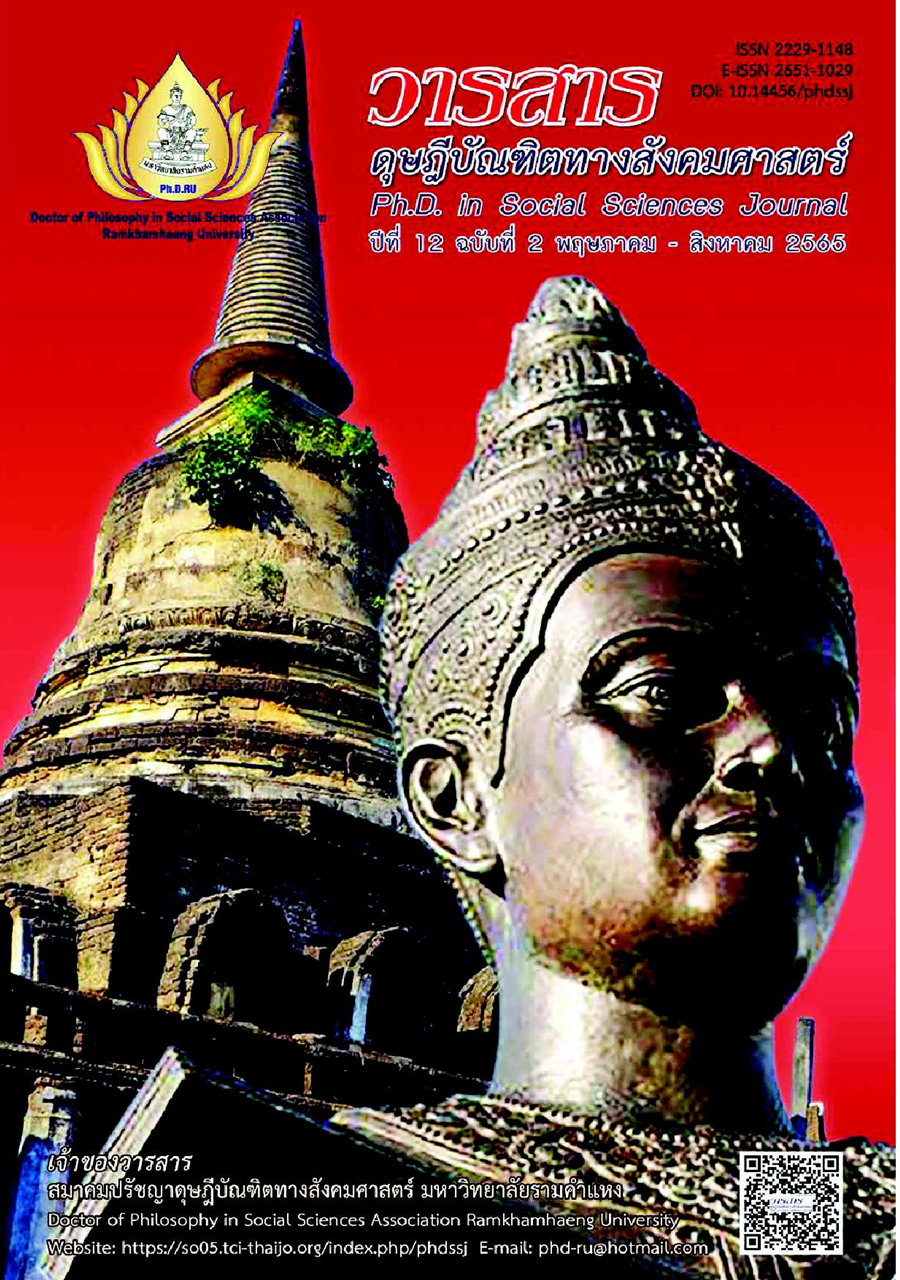Thai Cultural Heritage: Meru Loi
Main Article Content
Abstract
This research article aims to study the background of Thai cultural heritage, Meru Loi Ayutthaya. The researcher stays in the area for using the In-Depth interview and the collected data are analyzed with the Grounded theory. Samples are 17 persons who are purposive sampling and snowball sampling accordant with DelPhi Technique.
The results shows that: Meru Loi originated from contemporary Meru being built by Luan Po Tiam (Wat Kasattrathirat) for Jao Khun Suwanwimonsil (the abbot of Wat Bandai Charng). Meru Loi heritage era consists of (1) before 1932, the funeral of the layman normally used ashes of a burnout pyre, funeral pyre and marquee. There was no one top roof of contemporary crematorium like in the royal crematorium. (2) In 1932-1977, the construction of the Meru Loi consisted of two tiered roof, one top roof, weave bamboo panels covering over the construction. This Meru usually used for corpses both layman and monks in hot season. The decoration of the Meru originally painted with colors. Then, local philosophers mortised and excavated it. The colors of it were mostly gold, bronze, white and blue. Afterwards, the people usually covered it by gold paper and waxed and polished it. And (3) in 1977-present, the Meru is widespread constructed all around. The Cruciform of Meru is popularly evolved from one top to 5-9 top roofs. The workers of Meru use the wooden panel which is decorated by color pattern instead of weave bamboo panels.
Article Details

This work is licensed under a Creative Commons Attribution-NonCommercial-NoDerivatives 4.0 International License.
Academic articles, research articles, and book reviews in the Ph.D. in Social Sciences Journal are author’s opinions, and not the publisher’s, and is not the responsibility of the Ph.D. in Social Sciences Journal Philosophy Association, Ramkhamhaeng University. (In the case that research is done on human, the researcher has to be trained in Ethics for Doing Research on Human Training and has to produce the evidence of the training).
References
Charmaz, K. (2014). Constructing grounded theory: A practical guide through qualitative analysis. Sage.
Department of Cultural Promotion. (2015). The Handbook of registration of cultural heritage of nation. Author. [In Thai]
Edmonds, W. A., & Kennedy, T. D. (2017). An applied reference guide to research designs quantitative, qualitative, and mix methods. Sage.
Fine Arts Department. (2008). The world culture heritage. Author. [In Thai]
Huawiang Subdistrict Municipality. (2013). General data. Retrieved from https://huawiang.go.th/public/list/data/index/menu/1144. [In Thai]
Koses, S. (2010). Traditions about life: Birth, death, house and marriage. Siam. [In Thai]
Musikakhama, N., & Phanmawanich, K. (2016). Culture: New role in globalization. Fine Arts Department. [In Thai]
Na Thalang, A. (1997). Local wisdom of four region of Thailand: The way of life and learning process of Thai villagers. Sukhothai Thammathirat Open University Press. [In Thai]
United Nations Educational Scientific and Cultural Organization. (2003). The present translation has been prepared under the responsibility of the international information and networking. Author.
Wongthes, S. (2008). “Pra Meru” First in Ayutthaya period imitated from “Wisanulok” Angkor Wat, Mount Meru model. Ministry of Culture. [In Thai]


